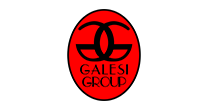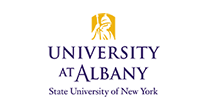News
May 26, 2015Sculptor John Van Alstine to Install Piece in Museum’s Sculpture Garden
What: Sculptor John Van Alstine will be at the Albany Institute of History & Art to install his sculpture Working the Sails (1990) in the Weir Sculpture Garden. The sculpture is a bequest from the Estate of Philip M. Smith and it pays homage to the sailing vessels that have plied the Hudson River for centuries.
John Van Alstine is an internationally recognized sculptor who lives and works in the southern Adirondacks. His sculptures incorporate local materials and found object forms that he casts in bronze.
Press is invited to come to see the installation and talk with the artist.
When: Tuesday, May 26, 2015 starting at 10am (installation will take several hours)—Confirmed as installation date
Rain date: Wednesday, May 27, 2015
Where: The Albany Institute of History & Art
125 Washington Avenue, Albany, NY 12210
Media Inquiries: Aine Leader-Nagy, Marketing Associate, (518) 463-4478 ext. 408, leader.nagya@albanyinstitute.org
More about the Weir Sculpture Garden: In 2001, with their gift to the Albany Institute’s Heritage Campaign, David and Candace Weir also brought to the museum their vision of an outdoor sculpture garden. The first sculpture to grace the sculpture garden was an untitled bronze work by the internationally known American sculptor Joel Shapiro, given to the museum in honor of the memory of David Andrew Weir.
Founded in 1791, the Albany Institute of History & Art is New York’s oldest museum. Its collections document the Hudson Valley as a crossroads of culture, influencing the art and history of the region, the state, and the nation. With more than 35,000 objects and one million documents in the library, it is an important resource for the region, giving our community a sense of the part the Hudson Valley played in the American story, and our own place in history. Permanent and temporary exhibitions are open year-round and create a sense of place, allowing visitors to meet the people who helped shape this region. Over 25,000 people visit the Albany Institute of History & Art every year, enjoying the collections, workshops, school programs, and lectures, helping to build an understanding of the history and culture of our region. Among the museum’s best-known and most-loved collections are the 19th century Hudson River School landscape paintings by artists like Thomas Cole and Frederic Church, the 19th century sculpture collections, and, of course, the famous Albany Mummies that came to the museum in 1909 and have been on view ever since. For more information, please visit www.albanyinstitute.org and be sure to follow us on Facebook (www.facebook.com/albanyinstitute) and Twitter (@AlbanyInstitute).


























